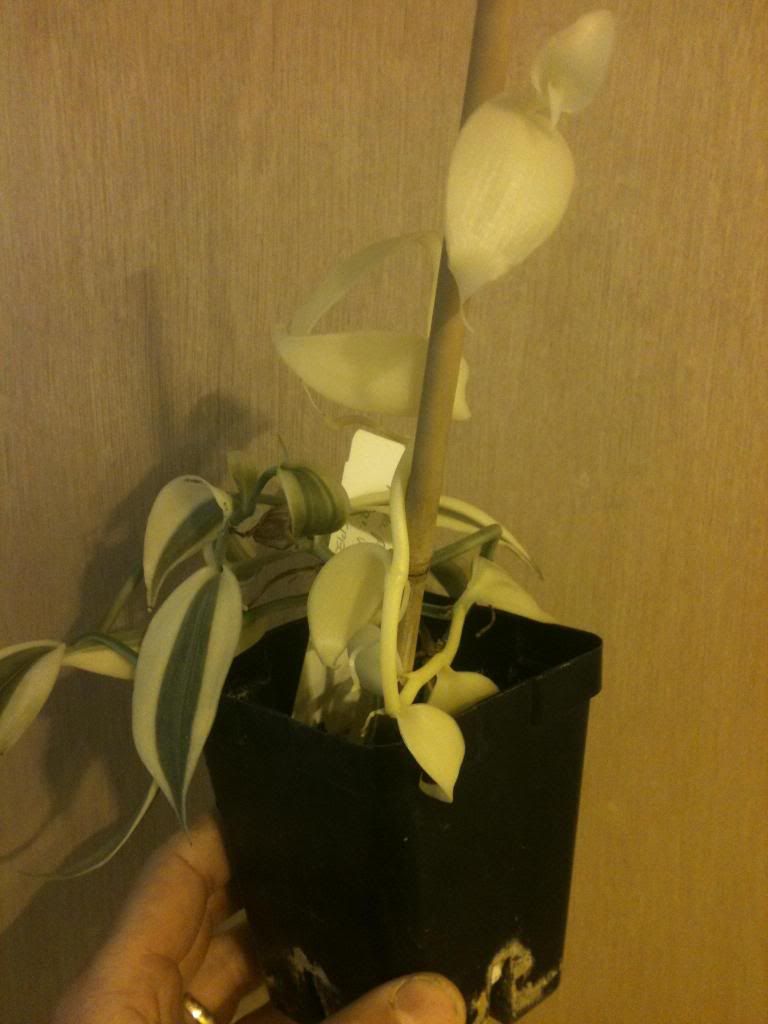A plant with this kind of variegation is known as a chimera, after the creature in Greek mythology that combined parts of 3 different animals in one. Two or more genetically distinct types of cells are wrapped up together and growing in a way that may not be entirely stable.
In this case there are normal green cells, and un-green cells that have lost their chloroplasts or their ability to make chlorophyll. Where both cell types exist in the meristem (growth point of the plant) the plant continually makes a mixture of green and white tissues that we see as bands of color throughout the plant, but there is a certain amount of chance involved that both tissue types will grow in proportion in the meristem and maintain the pattern.
Just by chance, or any time a branch comes from a node that is lacking one cell type or the other, you can get all-green or all-white shoots. Since the all-white ones can't photosynthesize they are dependent on sugars transported from other parts of the plant, and they tend to be slow growing and small, and may not persist for very long. All-green shoots are more vigorous and can over-grow the variegated parts of the plant.
Whatever happened in the first place to cause the un-green cells may have been a mutation, but there is no new mutation involved when you happen to get an all-white or all-green shoot from such a chimera.










































